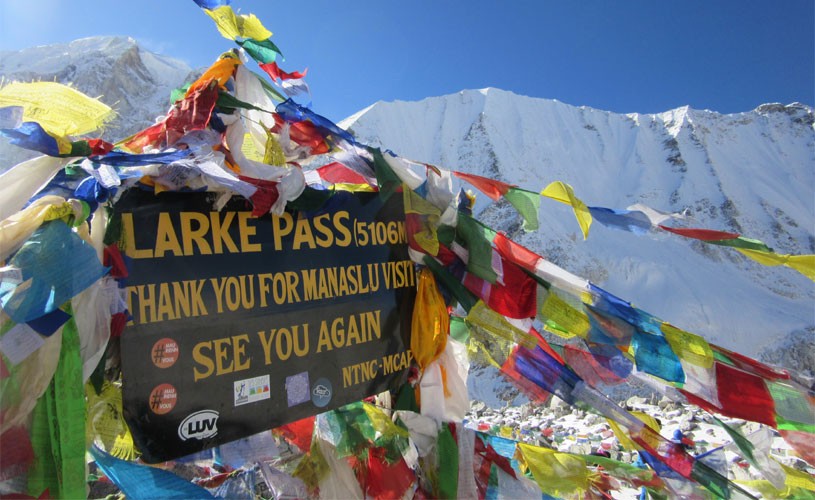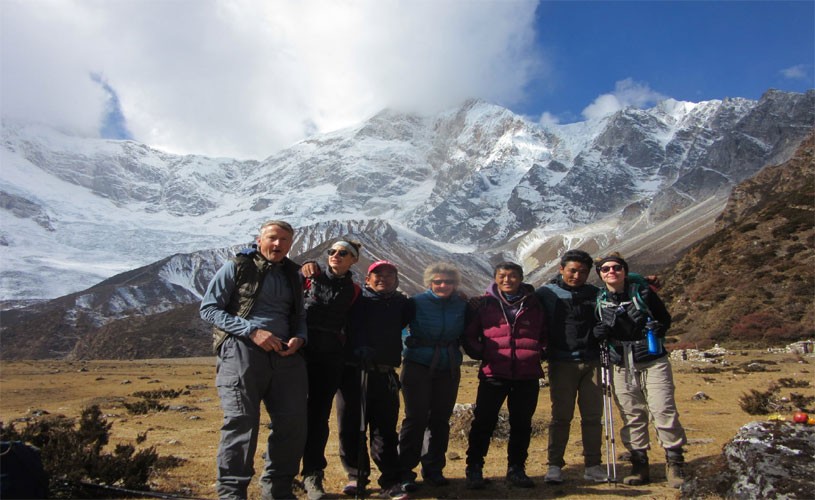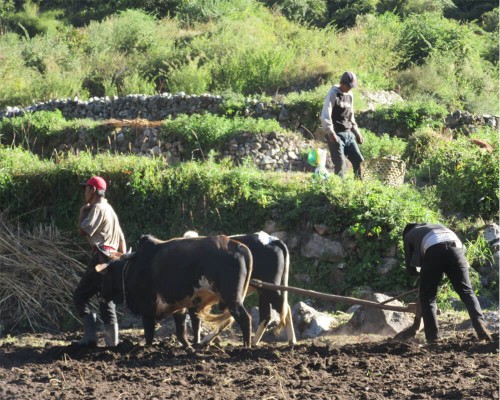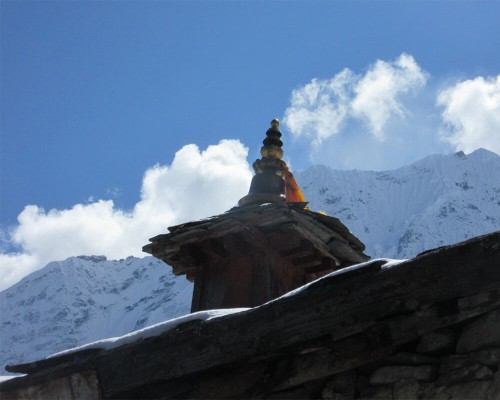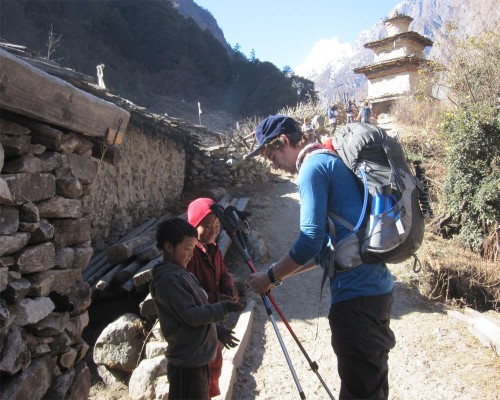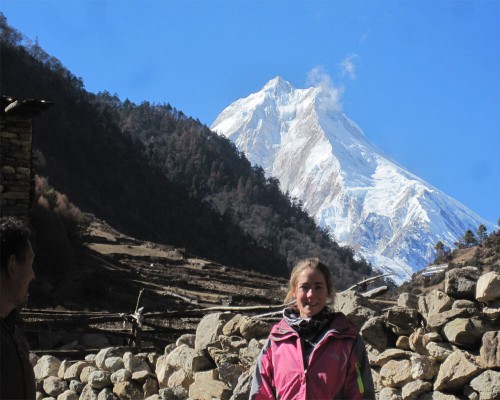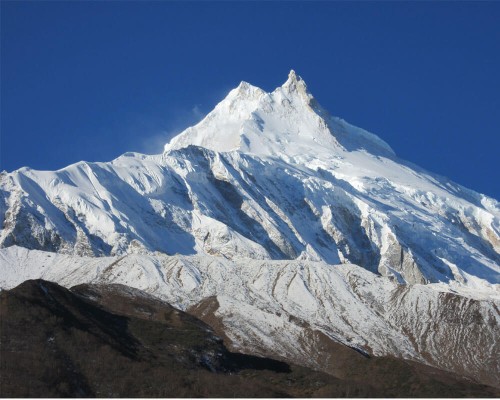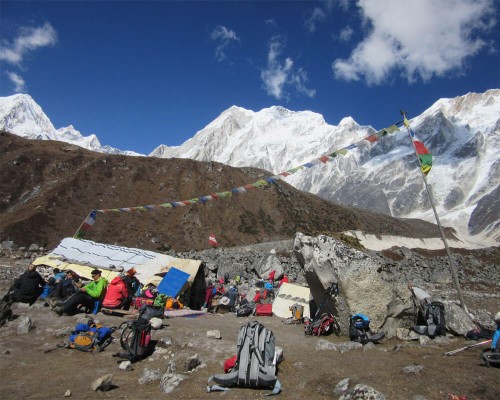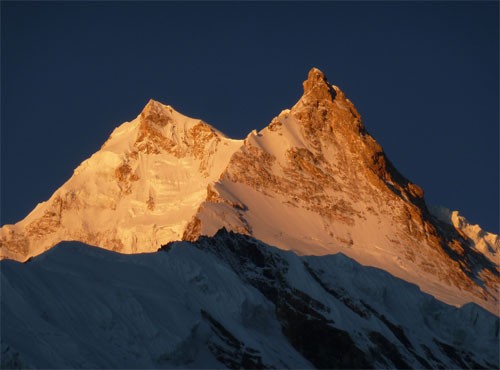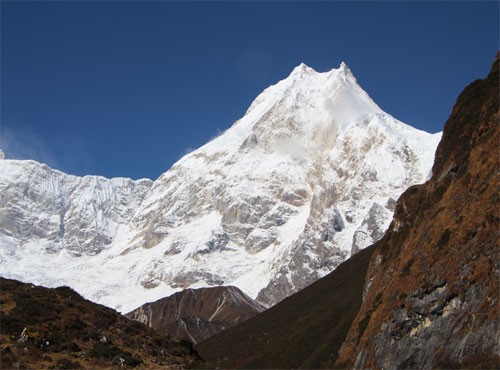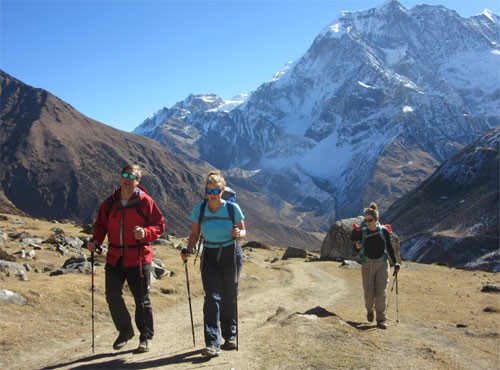Getting There And Away
The Manaslu Circuit Trek is one of the most popular Nepalese treks closest to Kathmandu. The 126 km drive (80 miles) from Kathmandu to Machha Khola is exciting and takes about 6-7 hours in a jeep or 8-9 hours with a regular bus. If the road conditions are bad, you may have to start walking in Soti Khola. This will add an extra day.
Acclimatization, And High-Altitude Sickness
The acclimatization planned during the trip helps trekkers adapt to the environment with less oxygen. Our body needs time to adjust to higher altitudes. Rushing to the higher elevation without acclimatization may result in acute mountain sickness (AMS), which could be fatal. The trekkers may suffer from AMS above 2,400m/7,875ft as the amount of oxygen becomes less and less with the increase in elevation.
We can categorize AMS into three categories with its symptoms. The trekker suffering from normal AMS feels giddy, gets headaches, has Nausea, and is out of breath, and is suggested not to worry as it disappears after the body gets used to less oxygen. Likewise, trekkers suffering from mild AMS show symptoms of dizziness, muscular pain, insomnia, headache, vomiting, loss of appetite, rapid heartbeat, and shortness of breath. Mild AMS can be treated with anti-headache medicines. A person suffering from serious AMS shows heightened symptoms, including shortness of breath, even while resting. The trekker with serious symptoms can barely walk, and fluids may start building up in the lungs. The trekker with serious AMS must be taken to a lower altitude immediately.
Advanced cases of AMS
If AMS is not treated in time, it can be life-threatening and lead to edema, a condition in which fluid accumulates in the tissues of the body. Following are the two serious altitude sicknesses caused at high altitudes.
High Altitude Cerebral Edema (HACE)
In HACE, the brain gets swollen which can lead to coma and even death. Its symptoms are paralysis on one side of the body, bladder dysfunction, fatigue, bowel dysfunction, loss of coordination, and confusion. Descend to a lower altitude as soon as possible to prevent the worsening of the condition.
High Altitude Pulmonary Edema (HAPE)
Fluid is accumulated in the lungs which also increases the capillary pressure. Its symptoms include severe shortness of breath at rest, dry cough that later leads to producing pink frothy sputum, and fatigue.
Important Note: Severe cases of AMS are pretty rare. All our guides at the Adventure Club Trek, are aware of the symptoms of AMS and can handle it with care. We prioritize acclimatization, talk about the use of Diamox beforehand, and counsel all our trekkers on the risk and preventive factors before and during the trip. Your safety is our main concern.
Equipment And Packing List
Here is some information to help you know what to bring for the trek. It's very important not to forget the essential items because they will affect how comfortable and safe you are. At the same time, try not to carry too much unnecessary gear.
General Items:
- An all-season sleeping bag and a down jacket (we can provide these if needed, but you’ll have to return them after the trek).
- A duffle bag (we’ll provide one for you during the trek, but it must be returned afterward).
- A windproof and waterproof lightweight jacket (this is essential for mornings and evenings above 3,000 meters).
- A daypack.
Important Documents And Items
- Valid passport, 2 extra passport-size photos, airline tickets.
- Dollars, pounds, or Euros in cash for purchasing a Nepali visa at Kathmandu airport, for paying for restaurants and hotels, for gratuities, and snacks, and for purchasing your drinks and gifts.
- Credit cards, Bank/ATM/Cash machine cards for withdrawing funds from cash machines (bring a photocopy of your cards), traveler's checks, etc
HEAD
- A bandana or headscarf, also useful in dusty conditions
- Warm hat that covers your ears (wool or synthetic)
- Headlamp with extra batteries and bulbs
- Sunglasses with UV protection
- Prescription sunglasses (if required)
UPPER BODY
- Polypropylene shirts (1 half sleeve and 2 long sleeves)
- Light and expedition-weight thermal tops
- Fleece wind-stopper jacket or pullover
- Waterproof (preferably breathable fabric) shell jacket
- Down vest and/or jacket *
- Gore-Tex jacket with hood, waterproof and breathable
LOWER BODY
- Non-cotton underwear briefs
- 1 pair of Hiking shorts
- 1 pair of hiking trousers
- 1 pair of lightweight thermal bottoms (seasonal)
- 1 pair of fleece or woolen trousers
- 1 pair of waterproof shell pants, breathable fabric
FEET
- 2 pairs of thin, lightweight inner socks
- 2 pairs of heavy poly or wool socks
- 1 pair of Hiking boots with spare laces (sturdy soles, water-resistant, ankle support, “broken-in”)
- 1 pair of trainers or running shoes and/or sandals
- Cotton socks (optional)
- Gaiters (winter only), optional, “low” ankle high version
HANDS
- 1 pair of lightweight poly liner gloves.
- 1 pair of lightweight wool or fleece gloves
- 1 pair of mittens, consisting of 1 Gore-Tex over mitt matched with a very warm polar-fleece mitt liner (seasonal)
TOILETRIES
- 1 medium-sized quick-drying towel
- Toothbrush/paste (preferably biodegradable)
- Multipurpose soap (preferably biodegradable)
- Deodorants
- Nail clippers
- Face and body moisturizer
- Female hygiene products
- Small mirror
- Personal Hygiene
- Wet wipes (baby wipes)
- Tissue /toilet roll
- Anti-bacterial handwash
SLEEPING
- 1 sleeping bag (good to -10 degrees C or 14 degrees F)*
- Fleece sleeping bag liner (optional)
- Rucksack and Travel Bags
- 1 medium rucksack (50-70 liters/3000-4500 cubic inches, can be used for an airplane carryon)
- 1 large duffel bag *
- A small daypack/backpack for carrying your valuables should have good shoulder padding
- Small padlocks for duffel-kit bags
- 2 large waterproof rucksack covers (optional)
MEDICAL
- Small, personal first-aid kit. (Simple and light)
- Aspirin, first-aid tape, and plasters (Band-Aids)
- Anti-diarrhea pills
- Anti-headache pills
- Cough and/or cold medicine
- Anti-altitude sickness pills: Diamox or Acetylpolyamine
- Stomach antibiotic: Ciprofloxacin, etc. Do not bring sleeping pills as they are respiratory depressants.
- Water purification tablets or the water filter
- Extra pair of prescription glasses, contact lens supplies
- Extras/Luxuries
- Reading book
- Trail map/guidebook
- Journal and pen
- Binoculars (optional)
- Voltage converter (from 220 to 110)
- Plug adapter (2 round pegs to 2 flat peg
Visa And Entry Procedures
All nationals except Indians require a visa for entry into Nepal. For 30 days, citizens of SAARC countries like Pakistan, Bangladesh, and Bhutan are exempt from visa requirements. Getting a Nepal visa can be a simple process. Tourist visas can be obtained at the airport or at official entry points. Travelers from Afghanistan, Iraq, and Cameroon are not eligible for visas on arrival. You will find electronic kiosks at Tribhuvan International Airport, Kathmandu, that can help you with visa processing. You will need to wait in the immigration line for your visa after completing the form and paying the fee.
Visitors can apply online for a visa within 15 working days of their arrival in Nepal. You must upload a passport-sized digital photo and your Nepal hotel address to the online form. You will need to print the confirmation page after submitting the online form. This must be presented at the Immigration section of the Kathmandu Airport along with your passport and the visa fee.
Tourists may also apply for a Nepali Visa at their home country's local Nepali Consulate or Embassy. They can also mail their application to the nearest visa office, but they should do this in advance to allow processing time. Nepal Visa Information for travelers of all categories and the cost of correspondence can be extremely useful. For more information and the contact details for the Nepali Embassy and Consulate in your area.
You will receive a visa for 15/30/90 days, depending on how you enter Nepal. The Nepal visa fee for multiple entries on arrival is:
15 days – US$30, 30 days – US$50, and 90days – US$125
Tourist visas can be extended for a maximum of 150 days in a year and these extensions are granted only at the department of immigration offices in Pokhara and Kathmandu. For more information on Nepal visas, visit our visa information page.
Our Trekking Guides/Leaders
Here at Adventure Club, our staff is like family. We only use locals to support their communities and we train our staff rigorously to be the best they can be – for you!
- Full first-aid training
- Guide Training (trekking)
- English and other common languages (as requested)
- Village and Land Conservation
- Mountaineering (for specialty expeditions or climbing treks)
All our guides are carefully trained for leadership as good leadership is vital for your trek to be enjoyable, safe, and successful. Most of our guides grew up in Sherpa country or other mountainous parts of Nepal. Their pride in their region shows itself in the way they lead treks and interface with you.
Porters Care
A successful and satisfying experience on any team depends on mutual respect and consideration. Since our porters are essential to every trekking team, they are paid fairly and given good care. After your tour, you'll realize how much they merit your respect and appreciation. It is requested that all hikers carry at most 40lbs/22kgs of luggage. Adventure Club Trek is dedicated to giving our porters the appropriate clothes, tools, and lodging. They receive the same care as the rest of the trekking crew if they are seriously injured or unwell. We might even foot the bill for their helicopter evacuation. We back the IPPG, which seeks to maintain and enhance the working conditions for our porters.
Travel Insurance
To be adequately protected in terms of insurance, you will need specialist travel insurance for participation in hazardous activities. A travel insurance policy that covers helicopter evacuation, trip cancellation, injury, death, lost baggage, theft, liability, medical treatment, and expenses is strongly recommended. Make sure the insurance covers all the activities that you will be undertaking during your stay in Nepal such as trekking and climbing. If you are injured and unable to travel, you can ask for a rescue helicopter from a remote area only if you have definite proof you can pay for it. Adventure Club Trek has an agreement in Kathmandu that guarantees payment for helicopter evacuations. They pay a cash deposit to the helicopter operator and collect the money from you once you have been rescued. Be sure your policy specifically covers mountaineering or alpinism or you may have a difficult time settling a claim.
Communication On Trek
On the Manaslu Circuit Trek in Nepal, the internet service will be available at lodges with some extra service charge. You can contact your family and friends from the guesthouses, but as we reach high altitude, the communication will be through the phone for safety purposes. We communicate with all our valuable clients through the team leader at least once a day to make sure you are fine and enjoying the trip. The Adventure Club Trek office in Kathmandu will constantly contact you for help you may need during the trek. Depending on the network you use, there could be a poor signal to the network before the high altitude. Upon your request, we can provide you with a separate local SIM card for a better network. Many places have WIFI service available at an extra cost.
Group Size And Team Composition
We always try to form a small group of like-minded people to give them a wonderful and perceptive travel experience. It provides opportunities to interact and share in a fun-filled environment when out in the wilderness. Generally, our travel group comprises a maximum of 14 members. We need at least two participants to run our fixed departure dates. For private trips, the number of group members does not apply. We always strive to form a team ensuring that the members are comfortable with one another.

